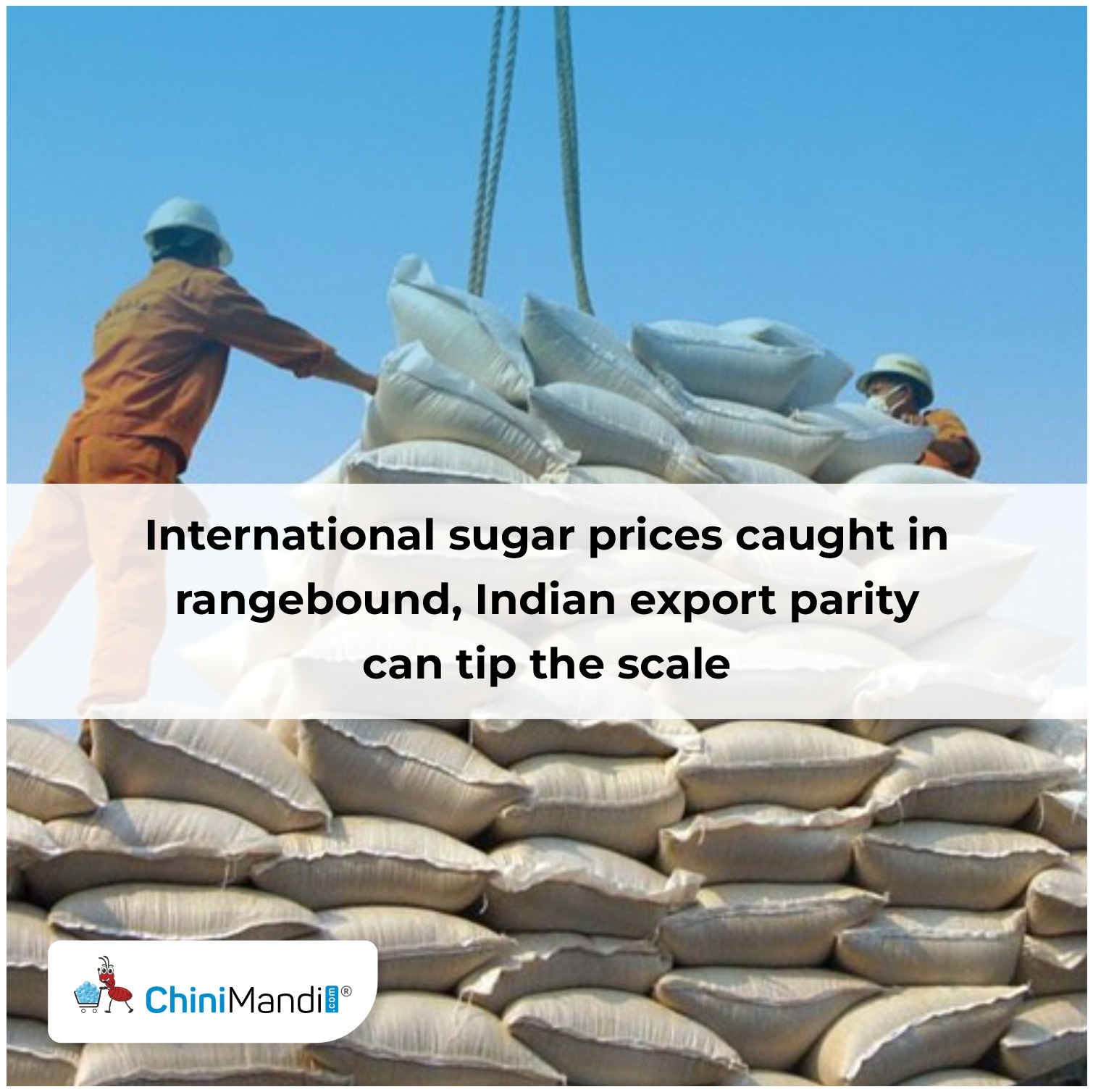The international sugar prices are trading in a tight price band of 16 to 17 cents, with no major triggers to lift market sentiment.
The Brazilian crop remains the key driver at the time being. Unica, the apex sugar association in Brazil, last week reported that though the sugar output in the Centre-South region fell 7.8% year on year through July, the percentage of sugarcane crushed for sugar by Brazil’s sugar mills in the second half of July increased to 54.10% from 50.32% the same time last year. This weighed down on the prices on Monday closing.
As India enters a new season in less than two months with expectations of a good crop, and the Thai crop is also expected to enter the market by the end of the year, it is important to understand the supply and demand side dynamics that will dictate international sugar prices in the coming months.
ChiniMandi spoke with international sugar analysts to gain a deeper understanding of the global dynamics.
Brazil dictating sugar prices

Kona Haque, Head of Research, ED&F Man, said, “I wouldn’t say that there is a surplus of sugar right now from a global context. The Brazilian crop is past the halfway mark now, even though we have had quite a few issues with regard to ATR, sugar mix and some inclement weather such as droughts and frosts. From Quarter four, we expect a better global supply situation as Asian crops will start coming in.”
Haque said that she expects sugar prices to remain rangebound for now in the 16-17 cents range, “If we see a big surplus, then the global prices might dip further. But equally, if the Brazilian crop turns out worse than expected (especially given that there is a wide range of estimates on Brazil’s crop data), then the world will be very reliant on the need for good crops out of Asia and Thailand”.
The Brazilian crop is largely dictating the international sugar prices at this time, is a widely held view amongst the market analysts.

Rahil Shaikh, Founder & MD at MEIR Commodities, added that, “The Thai and Indian harvests will enter the market only towards the end of the year. Prices are expected to remain rangebound, with the floor around 16 cents and the ceiling near 17.7 cents”.
Commenting on the weakness in the international market, Shaikh said that it should be noted that the global sugar market is currently under pressure due to speculative funds holding significant short positions, estimated at around 1,00,000–1,40,000 lots.
“As long as these short positions persist, prices may remain subdued. However, if funds begin covering their shorts, the market could see a sharp upward movement”, he said.
Price outlook

In the next six months, Nick Kwolek, Managing Director, Kulea (African commodity experts), said they see the prices trading in the 16-19 cent range in New York.
“The main factors that will affect pricing are the crops in India and Brazil. Thailand and Europe are also key, but from a world market view, it is India and Brazil where the market hinges. If the Brazilian crop is short, I think a strong, sharp rally to 19 cents and maybe even above is possible, but the Indian crop is looking very strong and thus will weigh on prices”.
According to him, sugar demand is not in great shape at the moment, and so it is hard to see a very strong rally without a major supply shock, “A shock that, for us, looks unlikely at this point. If anything, the world market needs to go up to get the Indian exports out of India, or the domestic price in India needs to come down or a bit of both”.
Energy market dynamics

Senior Sugar Analyst, Alessandra Rosette, said that the energy market developments will have an influence on the market along with weather conditions in Brazil and India, which will impact the crop.
“The market seems more focused on the potential for additional supply from India and the EU, even if volumes remain at relatively low levels.”
She said that in Brazil, prices are already close to ethanol parity, if not at parity in some cases, “From mid-September onward, we often see mills, particularly the better capitalised ones, start to stock ethanol for the intercrop period. This usually supports domestic ethanol prices, which in turn can give some support to sugar as well”.
Logistics remain an issue
Alessandra said, “There are, however, so many variables right now. Spot demand for Brazilian whites has been subdued, and persistent logistics bottlenecks in containerised exports remain an issue. On the demand side, buyers in key destinations are avoiding the aggressive stock-building we saw in 2024, and instead are purchasing cautiously, hand-to-mouth, given the economic and political uncertainty”.
India export parity
Kona Haque said that exports from India look difficult at the current prices. “At current prices, I don’t see Indian sugar hitting the export market much due to a lack of export parity. So that’s another dynamic that will influence prices if the global market needs the Indian sugar to satisfy world demand. India has enjoyed widespread rain in key sugarcane growing areas, and we are currently performing crop tours to assess how big the crop will be”.
Shaikh agrees with the view and said that the export benchmark would need to be above $480 FOB for shipments to make sense. “It is still early to draw conclusions; by January, a clearer picture of the Indian crop will emerge. Meanwhile, heavy rains in Maharashtra and UP cane belt raise questions about their potential impact on sucrose recovery”.
Kwolek adds that the world market needs to sit at around 18 cents and above to get Indian sugar out quickly, making it competitive with Brazil and refined sugar, “Currently, at 16 cents, it is not viable. As mentioned, a good crop in India depends really on the local prices in India; if they do not fall, the world market must go up to get the Indian sugar out and to market (circa 18 cents)”.
Presenting a second scenario, he said “Should the domestic market fall in India, then at 16 cents the sugar can come out to compete with other origins, but we must see the domestic market fall from Rs. 39000 to around Rs. 36000. So it is a bit of a game of cat and mouse at the moment. Where India will have a strong grip over Brazil in the transit time to the big Whites markets to the North, East and Southern Africa”.
Alessandra concluded that a good Indian crop would ease some pressure on the global S&D, but the actual impact will depend on how much of that crop is available for export.
















[…] Source : Chinimandi […]